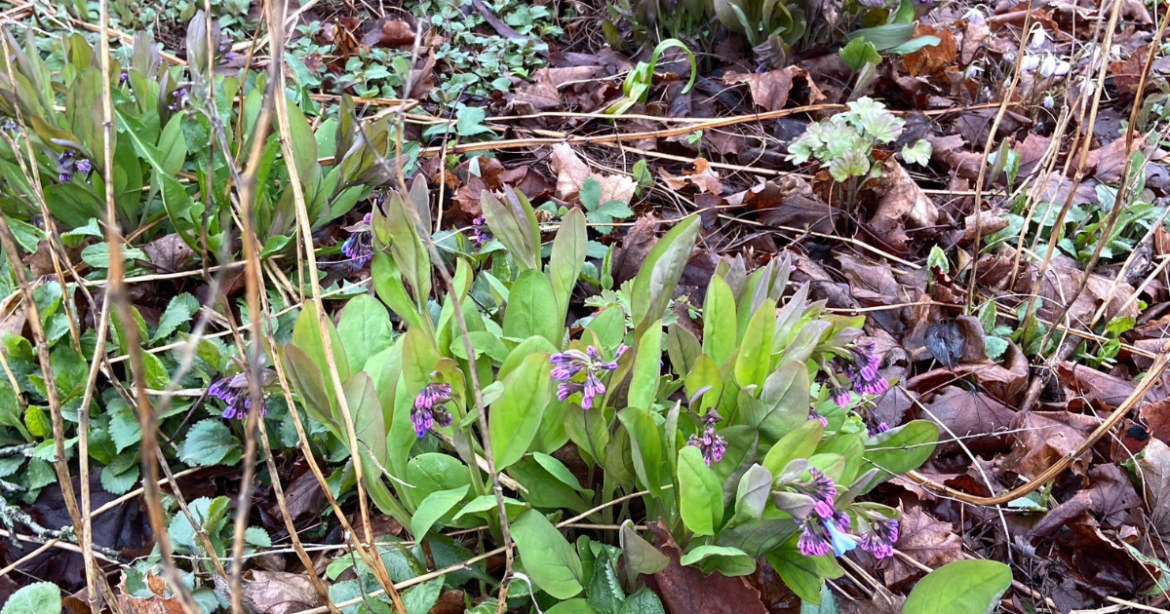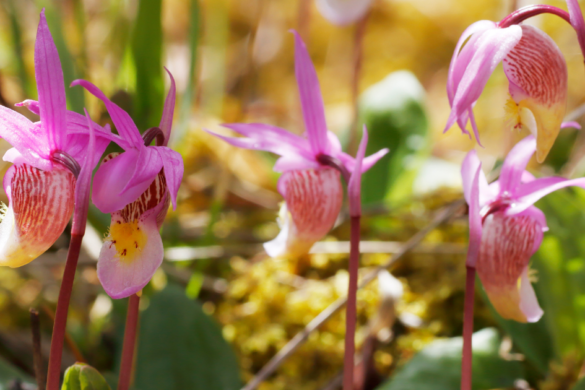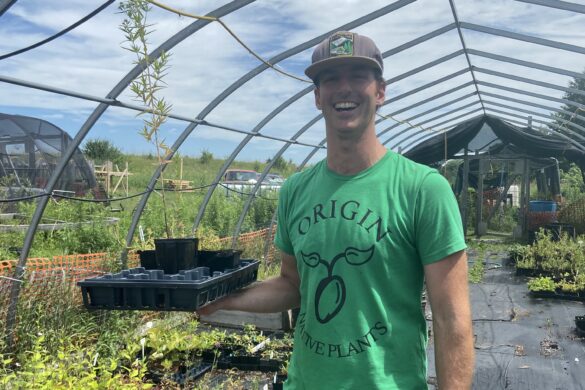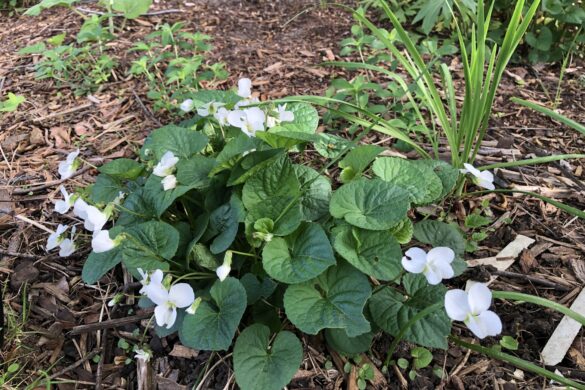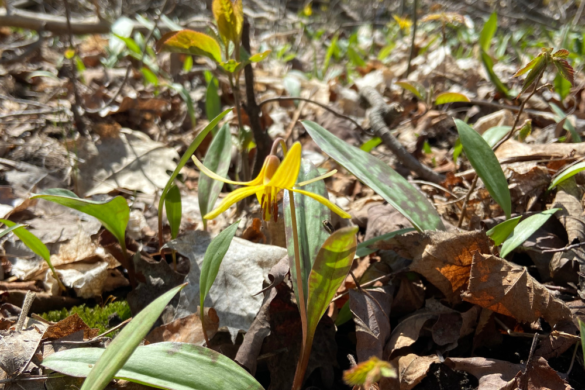Hepatica, Virginia bluebells, bloodroot and other spring wildflowers are tightly furled against the onslaught of wind and rain on a chilly spring morning.
No doubt they are grateful for the soaking, and also for the thick blanket of leaves, old stalks, twigs and other debris from last year’s growth that protect their tender new growth.
Their cosy, sheltering bed is unlike virtually all of the other gardens along my residential street, where last year’s growth has been cleared away, right down to the bare soil or wood chip mulch.
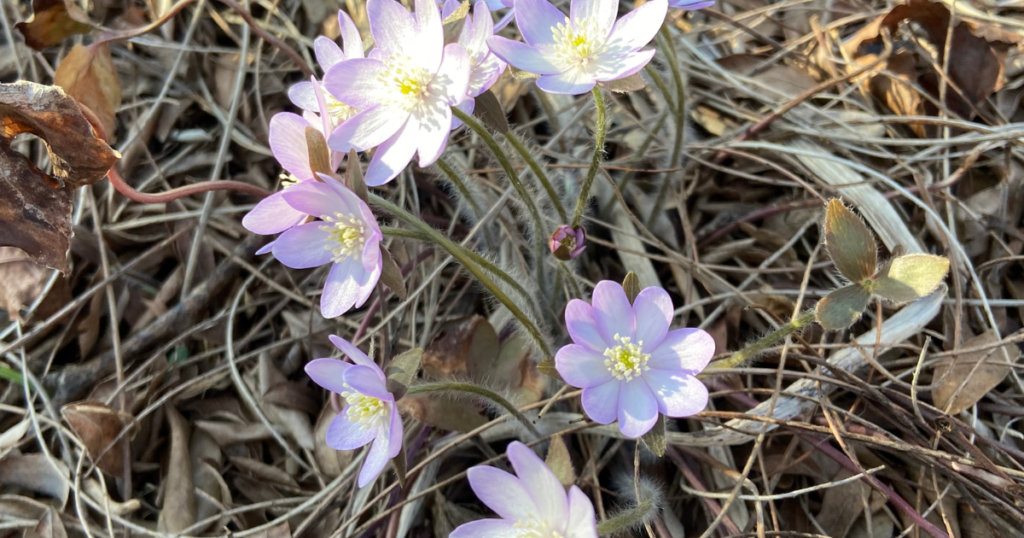
Earlier this week I noted dozens of paper garden ‘waste’ bags, standing like forlorn soldiers at the curb along my street, waiting for city trucks to haul them away. At their side were bundles of twigs neatly bundled and tied with twine.
Who knows how many beneficial insects go with them, insects that could feed baby birds in another few months?
It’s a loss for another reason as well.
Leaf mulch retains water, nourishes the soil, protects the plants
A few years ago, on a hot July day, I was admiring lush perennial beds at one stop on a garden tour, when the homeowner stepped near.
“I never water,” he said, explaining that he swept all the leaves into the garden in the fall and there they remained as the new growth grew up and eventually completely covered the composting leaves. But it continued to serve the garden, soaking up rainwater and keeping the moisture in the soil.
Nature’s gold
It echoed my father’s advice to never let leaves leave the property. They’re simply too valuable, a precious, life-giving resource.
I’ve followed the same practice for many years now, sweeping leaves into the garden beds each fall from the honey locust out front, and maples, dogwoods, a redbud and other trees out back.
The native plants in the garden age in place, their leaves eventually falling to earth and their stalks standing until sometime the following May when I cut them to about 18 inches in height, hoping they will become nesting sites for bees and other beneficial insects. As I cut them down, I add the rest of the stems and old flower heads to the garden bed as well.
Sticks and branches nurture beneficial organisms
Fallen sticks are helping to build to a mini-hedgerow in a corner behind a hemlock. They camouflage a black chain link fence and nurture other beneficial organisms. Like the leaf mulch, they add to the richness and diversity to the garden ecosystem.
Think ‘gentle tidy’ for spring cleanup
Another gardener friend mentioned this week that she has just finished removing the leaves from her garden to give the flowers space to grow and bloom. Of course, it makes sense to move leaves aside if they are matted or the new growth is struggling for the light.
But I think of the sweet pale pink Hepatica and the Virginia bluebells easily pushing their way up through the leaf mold into the world just outside my door. They know what to do.
Soon the leaves around them will be hidden by new growth. It will feed the garden and wildlife in the months to come and hold the rain that comes their way, protecting and nourishing the ground upon which it lays.

